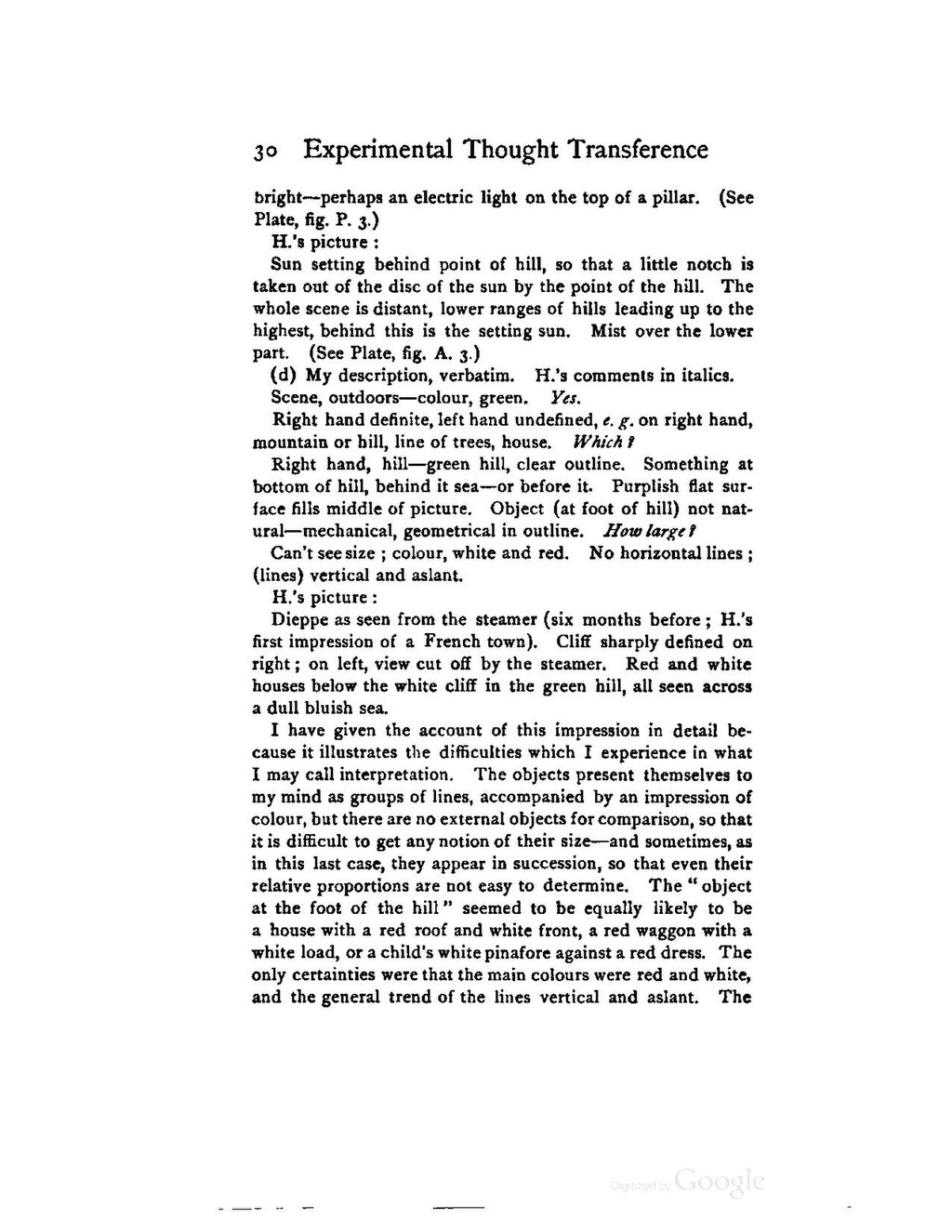bright—perhaps an electric light on the top of a pillar. (See Plate, fig. P. 3.)
H.'s picture:
Sun setting behind point of hill, so that a little notch is taken out of the disc of the sun by the point of the hill. The whole scene is distant, lower ranges of hills leading up to the highest, behind this is the setting sun. Mist over the lower part. (See Plate. fig. A. 3.)
(d) My description, verbatim. H.'s comments in italics. Scene, outdoors—colour, green. Yes.
Right hand definite, left hand undefined, e.g. on right hand, mountain or hill, line of trees, house. Which ?
Right hand, hill—green hill, clear outline. Something at bottom of hill, behind it sea—or before it. Purplish flat surface fills middle of picture. Object (at foot of hill) not natural—mechanical, geometrical in outline. How large ?
Can't see size; colour, white and red. No horizontal lines; (lines) vertical and aslant.
H.'s picture:
Dieppe as seen from the steamer (six months before; H.'s first impression of a French town.) Cliff sharply defined on right; on left, view cut off by the steamer. Red and white houses below the white cliff in the green hill, all seen across a dull bluish area.
I have given the account of this impression in detail because it illustrates the difficulties which I experience in what I may call interpretation. The objects present themselves to my mind as groups of lines, accompanied by an impression of colour, but there are no external objects for comparison, so that it is difficult to get any notion of their size—and sometimes, as in this last case, they appear in succession, so that even their relative proportions are not easy to determine. The "object at the foot of the hill" seemed to be equally likely to be a house with a red roof and white front, a red waggon with a white load, or a child's white pinafore against a red dress. The only certainties were that the main colours were red and white, and the general trend of the lines vertical and aslant. The